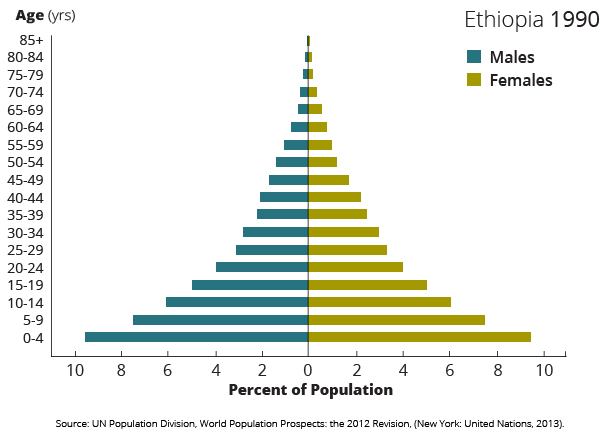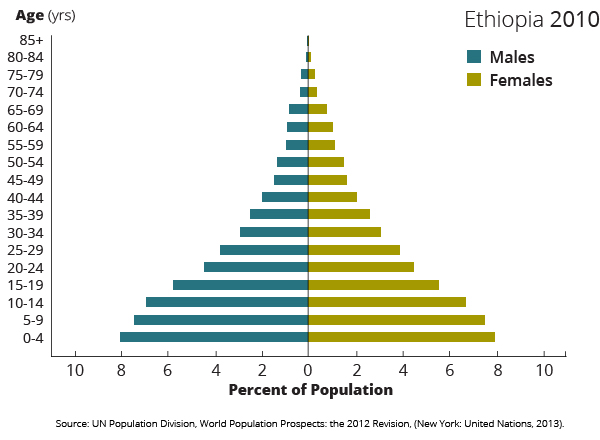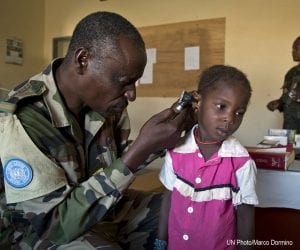Despite the challenges of population growth, Ethiopia is on the path to a population age structure suitable to experience a demographic dividend. The country has made progress in improving health and development of its people, however, the benefits of a demographic dividend will ultimately depend on the ability of Ethiopia to continue to implement appropriate social and economic policies for the country’s benefit.
In recent decades, Ethiopia has made great strides in expanding access to education and health services. Ethiopia’s focus on child and maternal health as well as family planning have achieved impressive results. Contraceptive use among women 15-49 years old rose from 4.2 percent in 1990 to 34.2 percent in 2014. These changes have fostered a fertility decline from 7.2 children per female in 1990 to 4.1 in 2014. Health improvements have also contributed to an increase in life expectancy and a decrease in infant and child mortality. Life expectancy rose from 47.1 years old in 1990 to 64 in 2014. Additionally, under 5-mortality decreased from 90.6 per 1000 births in 1990 down to 43.9 in 2014.
With the changes in rates of mortality and fertility, the age structure of Ethiopia’s population has begun to shift from a high proportion of young people to a relatively higher share of working-age people. The population pyramids below demonstrate this change between 1990, 2010, and the predicted 2030.



Ethiopia has established proactive public policies to address its demographic patterns, however, challenges still exist and there is a significant need for strong social and economic policies to continue as Ethiopia begins to reach the demographic window of opportunity.
Health
As Ethiopia has delivered on ambitious health programs, obstacles in relation to young people’s sexual and reproductive health, including adolescent family planning and child marriage are still apparent. In addition to improving these health programs, more attention should be devoted to quality of health services, effectiveness of health interventions, and financing of the overall health sector.
Education
Education access and opportunity is crucial to a demographic dividend. The knowledge and skills of Ethiopia’s working-age population will determine the extent to which Ethiopia can capitalize on demographic changes. In Ethiopia, 65 percent of primary-school-age children attend school, however, only 15 percent attend secondary school and young people’s literacy rates continue to be low. Efforts to strengthen education for Ethiopian young people, particularly girls, are essential for those that still receive no education, not enough education, or low-quality education.
Jobs
Ethiopia’s large youth population creates an opportunity for economic growth if a sufficient number of stable jobs are created for young people. However, among urban youth, unemployment is at 29 percent. It is critical for Ethiopia to avoid the widespread youth unemployment that has plagued some other African countries. Therefore, policies surrounding economic growth, job creation, and technical training will ensure adequate employment opportunities for young people entering the job market.
Will Ethiopia Experience a Demographic Dividend?
Whether or not Ethiopia will see the benefits of a demographic dividend remains to be seen but the outlook is hopeful. Ethiopia is well positioned to benefit from a demographic dividend if fertility continues to decline and the current large young population is able to find productive employment. Appropriate economic policies that promote growth will improve the gross domestic product and grow savings. However, the future gains will become much more impressive should these economic policies be matched with improvements in education, health, and family planning. Such a focus on Ethiopia’s young population will guide the country towards the “economic gift” of a demographic dividend allowing for the benefits of labor supply, savings, human capital and economic growth to follow.




